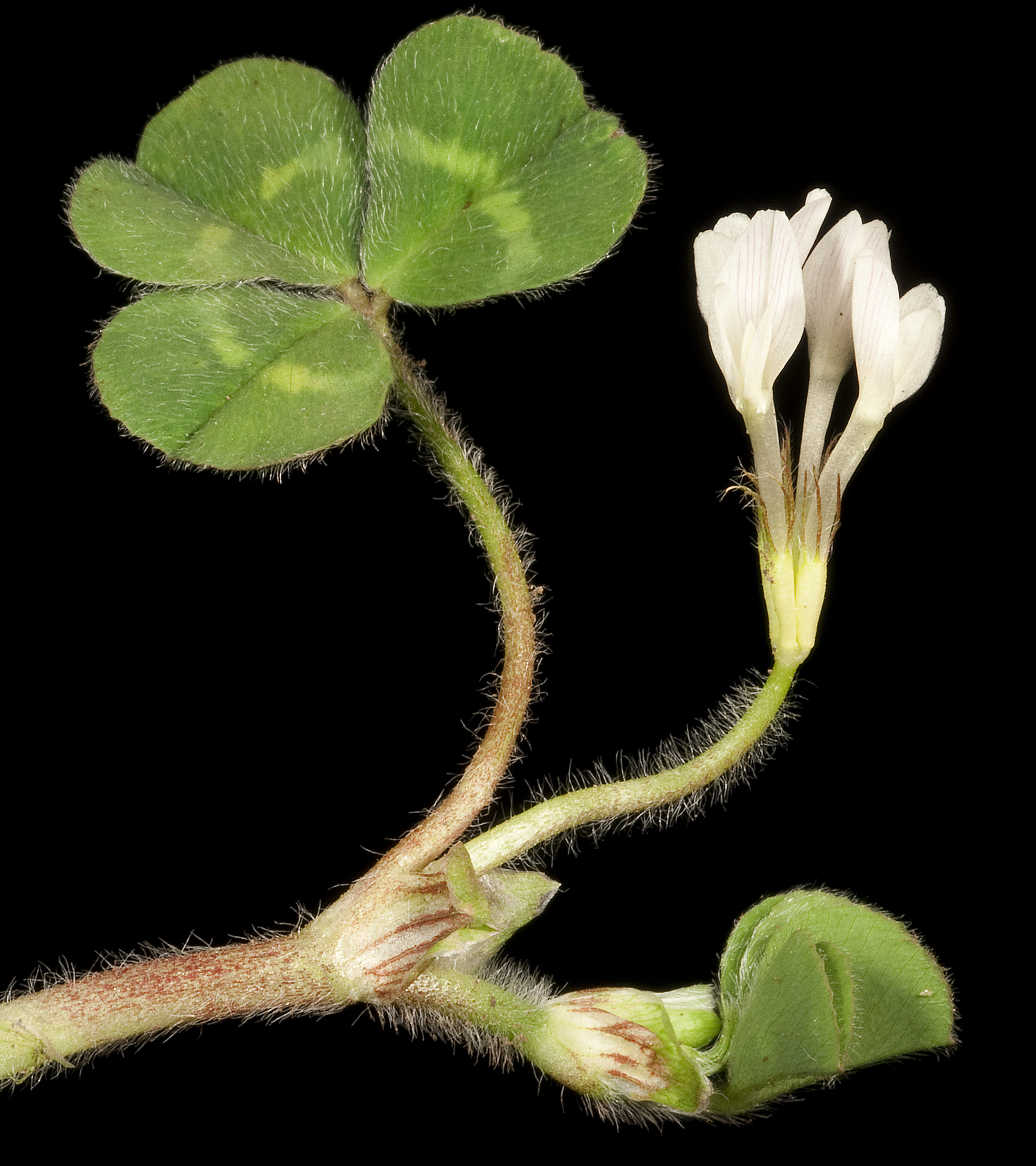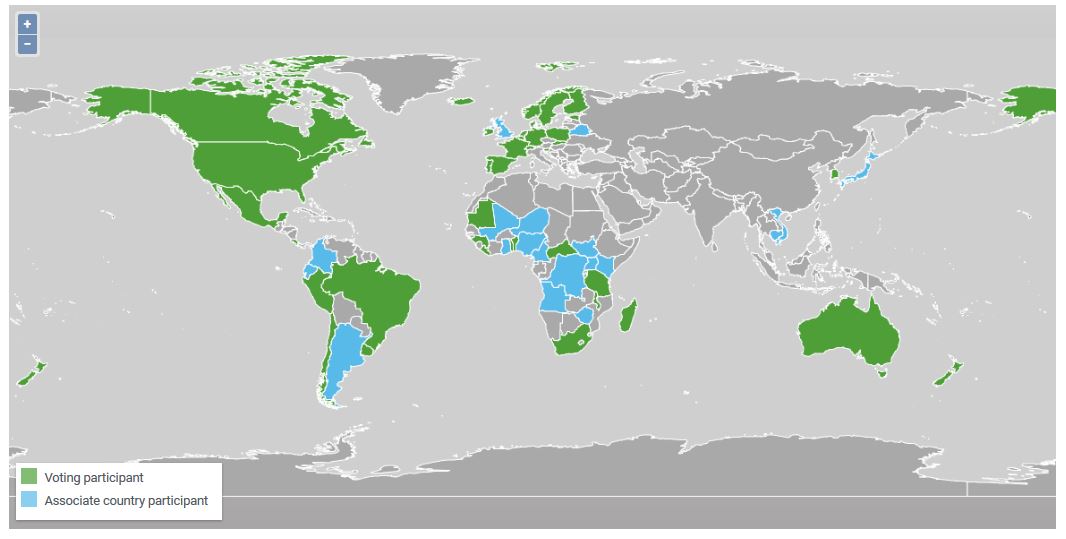|
Trifolium Subterraneum
''Trifolium subterraneum'', the subterranean clover (often shortened to sub clover), subterranean trefoil, is a species of clover native to Europe, Southwest Asia, Northwest Africa and Macaronesia. The plant's name comes from its underground seed development (geocarpy), a characteristic not possessed by other clovers. It can thrive in poor-quality soil where other clovers cannot survive, and is grown commercially for animal fodder. There are three distinct subspecies used in agriculture, each with its own ideal climate and soil type, allowing for wide distribution of the plant over varied environments. * ''T. subterraneum'' subsp. ''subterraneum'' is the generalist subspecies, and it can be grown in the widest range of environments. * ''T. subterraneum'' subsp. ''yanninicum'' is grown in moist areas that are prone to flooding or waterlogging. * ''T. subterraneum'' subsp. ''brachycalycinum'' is a more sensitive plant, requiring dry, cracked soil for its germination. Some syste ... [...More Info...] [...Related Items...] OR: [Wikipedia] [Google] [Baidu] |
Carl Linnaeus
Carl Linnaeus (23 May 1707 – 10 January 1778), also known after ennoblement in 1761 as Carl von Linné,#Blunt, Blunt (2004), p. 171. was a Swedish biologist and physician who formalised binomial nomenclature, the modern system of naming organisms. He is known as the "father of modern Taxonomy (biology), taxonomy". Many of his writings were in Latin; his name is rendered in Latin as and, after his 1761 ennoblement, as . Linnaeus was the son of a curate and was born in Råshult, in the countryside of Småland, southern Sweden. He received most of his higher education at Uppsala University and began giving lectures in botany there in 1730. He lived abroad between 1735 and 1738, where he studied and also published the first edition of his ' in the Netherlands. He then returned to Sweden where he became professor of medicine and botany at Uppsala. In the 1740s, he was sent on several journeys through Sweden to find and classify plants and animals. In the 1750s and 1760s, he co ... [...More Info...] [...Related Items...] OR: [Wikipedia] [Google] [Baidu] |
Amos William Howard
Amos William Howard (31 May 1848 2 March 1930) pioneered the introduction of subterranean clover as a fodder plant in Australia. Born in England on 31 May 1848, Amos William Howard was the son of gardener William and Ann (née Hester) Howard. In 1871 he married Eliza Rowe. In 1876 they migrated with their three children to South Australia South Australia (commonly abbreviated as SA) is a States and territories of Australia, state in the southern central part of Australia. With a total land area of , it is the fourth-largest of Australia's states and territories by area, which in ... on the ship ''Lightning'', which ran aground on the Troubridge Shoal shortly before reaching its destination. The ship was refloated without loss of life, luggage or cargo. In 1880, while employed as a gardener by South Australian politician, George Fowler, he wrote an essay for the Agricultural Society committee on how to pack fruit, such as grapes, plums and apples for export to England. ... [...More Info...] [...Related Items...] OR: [Wikipedia] [Google] [Baidu] |
Flora Of Western Asia
Flora (: floras or florae) is all the plant life present in a particular region or time, generally the naturally occurring ( indigenous) native plants. The corresponding term for animals is ''fauna'', and for fungi, it is '' funga''. Sometimes bacteria and fungi are also referred to as flora as in the terms ''gut flora'' or ''skin flora'' for purposes of specificity. Etymology The word "flora" comes from the Latin name of Flora, the goddess of plants, flowers, and fertility in Roman mythology. The technical term "flora" is then derived from a metonymy of this goddess at the end of the sixteenth century. It was first used in poetry to denote the natural vegetation of an area, but soon also assumed the meaning of a work cataloguing such vegetation. Moreover, "Flora" was used to refer to the flowers of an artificial garden in the seventeenth century. The distinction between vegetation (the general appearance of a community) and flora (the taxonomic composition of a community) wa ... [...More Info...] [...Related Items...] OR: [Wikipedia] [Google] [Baidu] |
Flora Of Europe
Europe is a continent located entirely in the Northern Hemisphere and mostly in the Eastern Hemisphere. It is bordered by the Arctic Ocean to the north, the Atlantic Ocean to the west, the Mediterranean Sea to the south, and Asia to the east. Europe shares the landmass of Eurasia with Asia, and of Afro-Eurasia with both Africa and Asia. Europe is commonly considered to be Boundaries between the continents#Asia and Europe, separated from Asia by the Drainage divide, watershed of the Ural Mountains, the Ural (river), Ural River, the Caspian Sea, the Greater Caucasus, the Black Sea, and the waterway of the Bosporus, Bosporus Strait. "Europe" (pp. 68–69); "Asia" (pp. 90–91): "A commonly accepted division between Asia and Europe ... is formed by the Ural Mountains, Ural River, Caspian Sea, Caucasus Mountains, and the Black Sea with its outlets, the Bosporus and Dardanelles." Europe covers approx. , or 2% of Earth#Surface, Earth's surface (6.8% of Earth's land area), making it ... [...More Info...] [...Related Items...] OR: [Wikipedia] [Google] [Baidu] |
Crops
A crop is a plant that can be grown and harvested extensively for profit or subsistence. In other words, a crop is a plant or plant product that is grown for a specific purpose such as food, fibre, or fuel. When plants of the same species are cultivated in rows or other systematic arrangements, it is called crop field or crop cultivation. Most crops are harvested as food for humans or fodder for livestock. Important non-food crops include horticulture, floriculture, and industrial crops. Horticulture crops include plants used for other crops (e.g. fruit trees). Floriculture crops include bedding plants, houseplants, flowering garden and pot plants, cut cultivated greens, and cut flowers. Industrial crops are produced for clothing (fiber crops e.g. cotton), biofuel (energy crops, algae fuel), or medicine (medicinal plants). Production There was an increase in global production of primary crops by 56% between 2000 and 2022 to 9.6 billion tonnes, which represents a 0.7 ... [...More Info...] [...Related Items...] OR: [Wikipedia] [Google] [Baidu] |
Trifolium
Clovers, also called trefoils, are plants of the genus ''Trifolium'' (), consisting of about 300 species of flowering plants in the legume family Fabaceae originating in Europe. The genus has a cosmopolitan distribution with the highest diversity in the temperate Northern Hemisphere, but many species also occur in South America and Africa, including at high altitudes on mountains in the tropics. They are small annual, biennial, or short-lived perennial herbaceous plants, typically growing up to tall. The leaves are trifoliate (rarely, they have more or fewer than three leaflets; the more (or fewer) leaflets the leaf has, the rarer it is; see four-leaf clover), with stipules adnate to the leaf-stalk, and heads or dense spikes of small red, purple, white, or yellow flowers; the small, few-seeded pods are enclosed in the calyx. Other closely related genera often called clovers include '' Melilotus'' (sweet clover) and '' Medicago'' (alfalfa or Calvary clover). As legumes, c ... [...More Info...] [...Related Items...] OR: [Wikipedia] [Google] [Baidu] |
Australasian Virtual Herbarium
The ''Australasian Virtual Herbarium'' (AVH) is an online resource that allows access to plant specimen data held by various Australian and New Zealand herbaria. It is part of the Atlas of Living Australia (ALA), and was formed by the amalgamation of ''Australia's Virtual Herbarium'' and ''NZ Virtual Herbarium''. As of 12 August 2014, more than five million specimens of the 8 million and upwards specimens available from participating institutions have been databased. Uses This resource is used by academics, students, and anyone interested in research in botany in Australia or New Zealand, since each record tells all that is known about the specimen: where and when it was collected; by whom; its current identification together with the botanist who identified it; and information on habitat and associated species. ALA post processes the original herbarium data, giving further fields with respect to taxonomy and quality of the data. When interrogating individual specimen reco ... [...More Info...] [...Related Items...] OR: [Wikipedia] [Google] [Baidu] |
GBIF
The Global Biodiversity Information Facility (GBIF) is an international organisation that focuses on making scientific data on biodiversity available via the Internet using web services. The data are provided by many institutions from around the world; GBIF's information architecture makes these data accessible and searchable through a single portal. Data available through the GBIF portal are primarily distribution data on plants, animals, fungi, and microbes for the world, and scientific names data. The mission of the GBIF is to facilitate free and open access to biodiversity data worldwide to underpin sustainable development. Priorities, with an emphasis on promoting participation and working through partners, include mobilising biodiversity data, developing protocols and standards to ensure scientific integrity and interoperability, building an informatics architecture to allow the interlinking of diverse data types from disparate sources, promoting capacity building and cataly ... [...More Info...] [...Related Items...] OR: [Wikipedia] [Google] [Baidu] |
University Of Melbourne
The University of Melbourne (colloquially known as Melbourne University) is a public university, public research university located in Melbourne, Australia. Founded in 1853, it is Australia's second oldest university and the oldest in the state of Victoria (Australia), Victoria. Its Parkville Campus (University of Melbourne), main campus is located in Parkville, Victoria, Parkville, an inner suburb north of Melbourne central business district, Melbourne's central business district, with several other campuses located across the state of Victoria (Australia), Victoria. Incorporated in the 19th century by the State of Victoria, colony of Victoria, the University of Melbourne is one of Australia's six sandstone universities and a member of the Group of Eight (Australian universities), Group of Eight, Universitas 21, Washington University in St. Louis, Washington University's McDonnell International Scholars Academy, and the Association of Pacific Rim Universities. Since 1872, many ... [...More Info...] [...Related Items...] OR: [Wikipedia] [Google] [Baidu] |
Yvonne Aitken
Yvonne Aitken (17 October 1911 – 29 November 2004) was an Australian agricultural scientist whose contributions to the field included studies of plant flowering as it depends on climate, season, and genetic factors. She was appointed as a Member of the Order of Australia in 1989. Aitken's primary goal was to produce a greater range of consumable crops. By comparing flowering data for particular plant varieties across various latitudes, and under laboratory conditions, Aitken deduced fundamental factors that governed the transition of plants from the vegetative to reproductive states. In general, those plants flowering earliest under given conditions had the least dependence on climate whereas later-flowering varieties reacted strongly to the climate setup. Background and personal life Aitken was born on 17 October 1911 in Horsham, Victoria to David Aitken and Arabella Miller. She was the eldest of two children. Aitken was educated at the Convents of Mercy in the town in w ... [...More Info...] [...Related Items...] OR: [Wikipedia] [Google] [Baidu] |
District Council Of Mount Barker
The Mount Barker District Council is a local government area, centred on the Adelaide hills town of Mount Barker, just outside the Adelaide metropolitan area in South Australia South Australia (commonly abbreviated as SA) is a States and territories of Australia, state in the southern central part of Australia. With a total land area of , it is the fourth-largest of Australia's states and territories by area, which in .... History The council was established in October 1853. In May 1935, it expanded to four times its original size as part of a major series of council amalgamations, absorbing the District Council of Nairne and parts of the District Council of Echunga and the District Council of Macclesfield. Council Members of the council are: Towns and localities Towns and localities in the Mount Barker District Council include: See also * List of parks and gardens in rural South Australia References External linksLocal Government Association [...More Info...] [...Related Items...] OR: [Wikipedia] [Google] [Baidu] |







